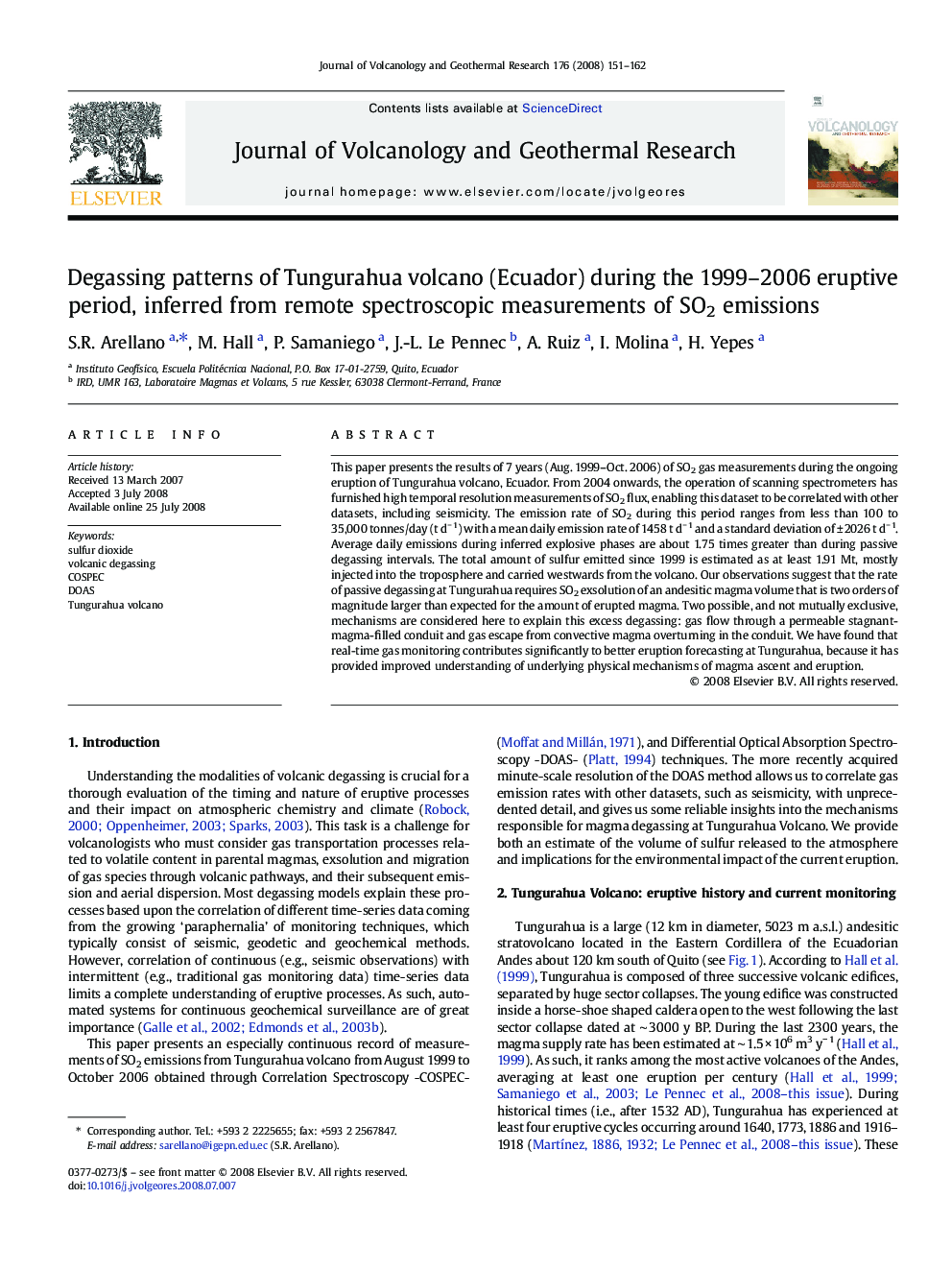| Article ID | Journal | Published Year | Pages | File Type |
|---|---|---|---|---|
| 4714473 | Journal of Volcanology and Geothermal Research | 2008 | 12 Pages |
This paper presents the results of 7 years (Aug. 1999–Oct. 2006) of SO2 gas measurements during the ongoing eruption of Tungurahua volcano, Ecuador. From 2004 onwards, the operation of scanning spectrometers has furnished high temporal resolution measurements of SO2 flux, enabling this dataset to be correlated with other datasets, including seismicity. The emission rate of SO2 during this period ranges from less than 100 to 35,000 tonnes/day (t d− 1) with a mean daily emission rate of 1458 t d− 1 and a standard deviation of ± 2026 t d− 1. Average daily emissions during inferred explosive phases are about 1.75 times greater than during passive degassing intervals. The total amount of sulfur emitted since 1999 is estimated as at least 1.91 Mt, mostly injected into the troposphere and carried westwards from the volcano. Our observations suggest that the rate of passive degassing at Tungurahua requires SO2 exsolution of an andesitic magma volume that is two orders of magnitude larger than expected for the amount of erupted magma. Two possible, and not mutually exclusive, mechanisms are considered here to explain this excess degassing: gas flow through a permeable stagnant-magma-filled conduit and gas escape from convective magma overturning in the conduit. We have found that real-time gas monitoring contributes significantly to better eruption forecasting at Tungurahua, because it has provided improved understanding of underlying physical mechanisms of magma ascent and eruption.
